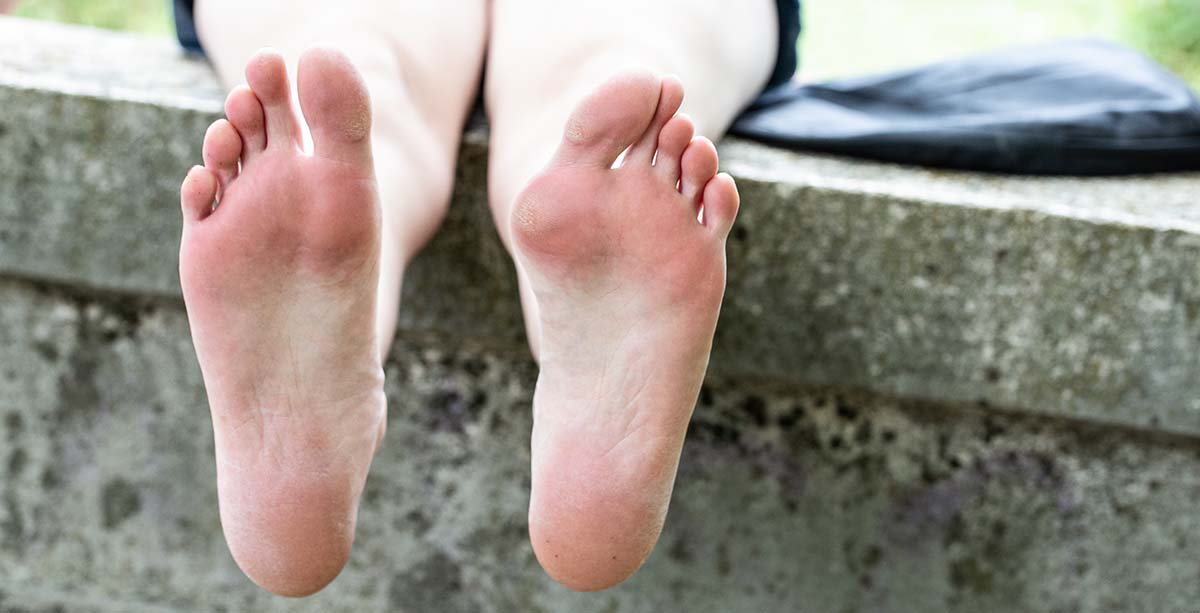What are Bunions (Hallux Valgus)?
By: Dr. Kevin McIntyre B.Kin., DC
What are Bunions?
Bunions are a common condition in which the big toe bends inward toward the other toes and creates a bump on the inside of the foot. This is also referred to as hallux valgus. “Hallux” refers to the big toe, and “valgus” refers to the specific angulation that occurs in the joint. The picture below will give you an idea of what a bunion is, although this foot doesn’t really have a bunion. The yellow lines are exaggerated to show how the bones might angulate. The red area is where you would see the bulge, known as a bunion.
Diagnosis
X-rays aren’t usually necessary to diagnose bunions, but the angulation often looks much more dramatic when viewed on x-ray. That is, in the clinic it might not look very pronounced, but when we see x-rays of the same patient, the angulation can be striking!
Although bunions normally occur later in life after we’ve had lots of mileage on our joints, they can also occur in the pediatric population. In these cases, bunions are linked to pes planus or “flat feet”. When the arch of the foot is caved in, the first toe is put under what is called a valgus stress. The joint eventually adapts to that stress and the alignment is altered.
Bunions are not necessarily painful, especially in pediatric cases. Over time though, in adults, the combination of progressive change in angle and some normal arthritic degeneration, the area will likely start to hurt.
More and more research is showing that in various areas of the body, structural changes in symmetry don’t correlate with pain and dysfunction. Flat feet, mild scoliosis, shoulders being “unlevel” and other aberrations from what are considered anatomically perfect often don’t mean someone is going to be in pain. As I’ve mentioned in blog posts before, Usain Bolt, the fastest man on earth, has a rather significant curve in his spine. It obviously doesn’t impact his ability to run fast. When it comes to bunions or hallux valgus, do we need to worry?
Treatment
Severe bunions that are painful usually warrant a referral to a foot specialist like a podiatrist or orthopedic surgeon. Prior to that, we always recommend conservative strategies like what are offered at our clinic. I usually recommend interventions that don’t carry the possibility of unwanted side effects. In the case of bunions, if painful, I would likely recommend strengthening of the intrinsic muscles of the foot and first toe. For those with flat feet, I might recommend footwear or orthotics that offer more arch support to see if it alleviates any pain that might be occurring. Toe spacers are a great example of something that isn’t necessary for those with bunions, but they might help, and they might offer symptom relief.
The best example I can give is myself. I have very flat feet, but I do not have bunions. Recently I tried using simple off-the-shelf, inexpensive toe spacers between my first and second toes to see what it feels like. I also wear custom foot orthotics in a very neutral shoe. I found the spacers very comfortable. Perhaps they will prevent hallux valgus in the future, but I cannot say for certain. Since this intervention doesn’t have any obvious downside (and, in fact, I find them quite comfortable), I’m going to wear them for a while and see what happens.
(This picture is to show you how a simple toe spacer might promote proper alignment in the first toe).










